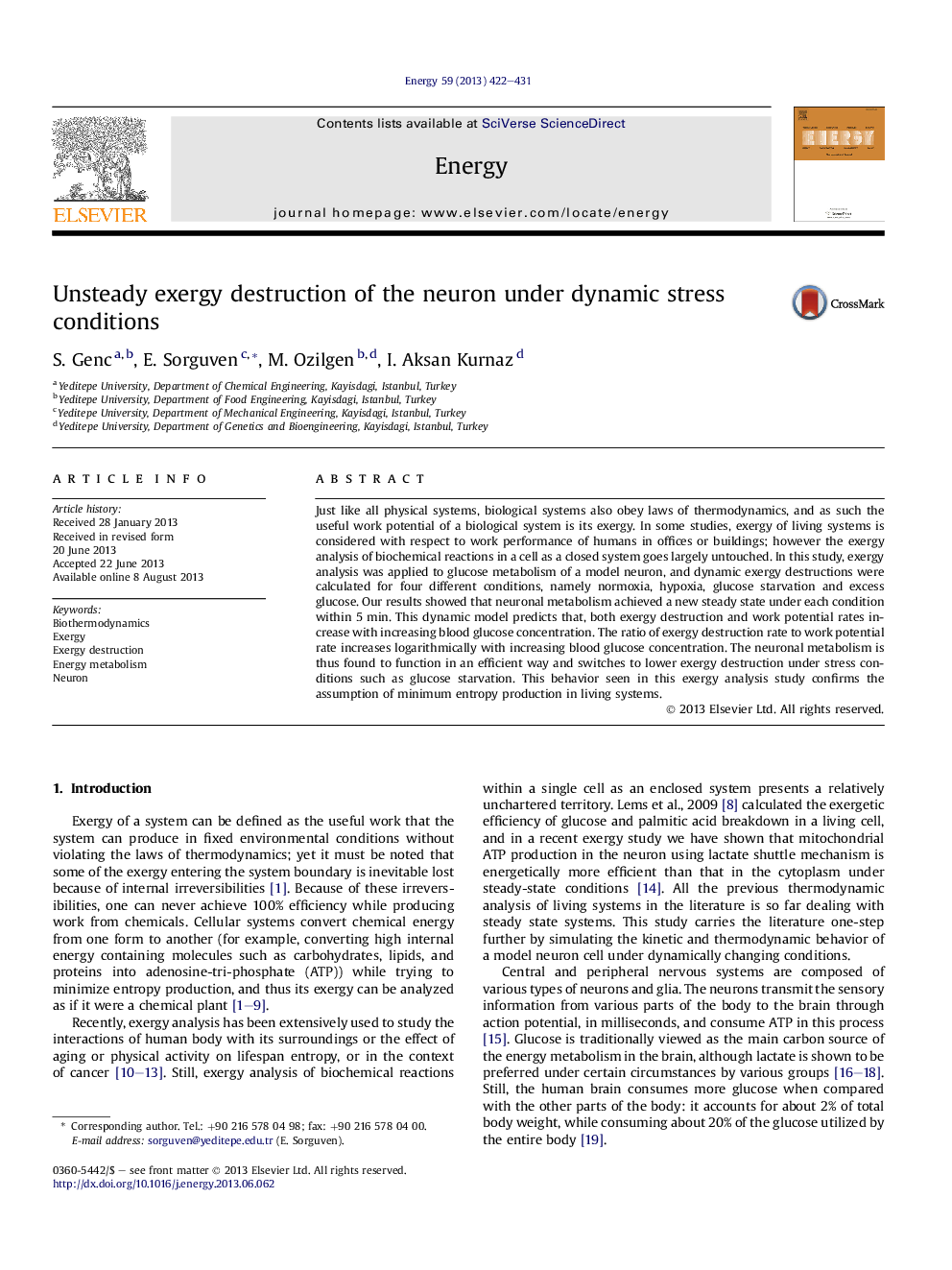| Article ID | Journal | Published Year | Pages | File Type |
|---|---|---|---|---|
| 8079220 | Energy | 2013 | 10 Pages |
Abstract
Just like all physical systems, biological systems also obey laws of thermodynamics, and as such the useful work potential of a biological system is its exergy. In some studies, exergy of living systems is considered with respect to work performance of humans in offices or buildings; however the exergy analysis of biochemical reactions in a cell as a closed system goes largely untouched. In this study, exergy analysis was applied to glucose metabolism of a model neuron, and dynamic exergy destructions were calculated for four different conditions, namely normoxia, hypoxia, glucose starvation and excess glucose. Our results showed that neuronal metabolism achieved a new steady state under each condition within 5Â min. This dynamic model predicts that, both exergy destruction and work potential rates increase with increasing blood glucose concentration. The ratio of exergy destruction rate to work potential rate increases logarithmically with increasing blood glucose concentration. The neuronal metabolism is thus found to function in an efficient way and switches to lower exergy destruction under stress conditions such as glucose starvation. This behavior seen in this exergy analysis study confirms the assumption of minimum entropy production in living systems.
Related Topics
Physical Sciences and Engineering
Energy
Energy (General)
Authors
S. Genc, E. Sorguven, M. Ozilgen, I. Aksan Kurnaz,
